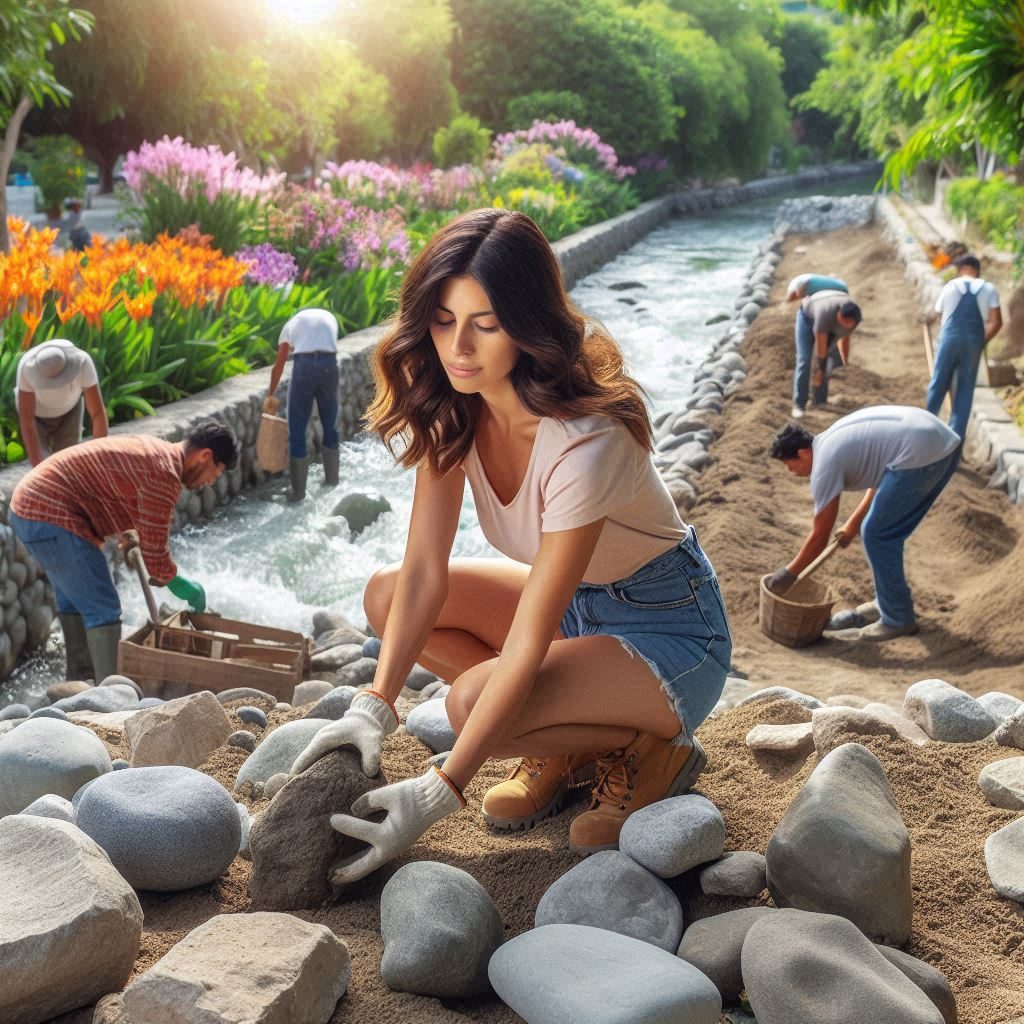What Is Landscape Erosion & Why Does It Occur

Erosion Control and Drainage
Creating a thriving garden is both a joy and a challenge. Among the hurdles faced by gardeners, two stand out: drainage issues and erosion. Fear not! Enter landscape rocks—the unsung heroes that can transform your outdoor space.
Understanding Landscape Erosion
Landscape Erosion, like a stealthy intruder, threatens the stability of our yards. It strips away fertile topsoil, undermines plant health, and leaves behind uneven terrain. But behold! Landscape rocks step onto the scene. By strategically placing these rugged guardians along slopes and vulnerable edges, we can thwart erosion, stabilize the soil, and fortify our yards against nature’s relentless forces.
Enhancing Drainage with Landscape Rock
Landscape rocks aren’t mere bystanders; they’re drainage wizards. Picture this: gravel and pebbles thoughtfully positioned in low-lying areas or alongside sloping terrain. Their mission? To prevent soil erosion and facilitate swift water absorption. These permeable rock formations minimize puddles and standing water, creating not only functional drainage systems but also visually appealing landscapes.
The Artistry of Erosion Control
Erosion control isn’t just science; it’s an art form. Imagine rock terraces—nature’s elegant steps—slowing down water flow. Picture larger rocks strategically placed to shield against rainwater’s assault. And don’t forget stabilized decomposed granite (DG) on hillsides—an extra layer of defense. These rocks aren’t merely utilitarian; they’re sculptors of resilience and beauty.
Rock Retaining Walls Is A Dual Purpose
Rock retaining walls—stalwart and versatile—serve as both practical erosion control and aesthetic enhancers. They harmonize with your garden’s design while silently battling soil loss. So, when you spot those unassuming 2cm-sized rocks at the base of your pots, know that they’re not mere adornments. They’re the unsung heroes, keeping your garden rock-solid and resilient.

Environmental Considerations For Landscaping Erosion
————————-
Sustainable Sourcing
When selecting landscape rocks, consider their origin. Opt for locally sourced rocks to minimize transportation-related carbon emissions. Additionally, choose rocks that are abundant and naturally occurring, rather than those extracted from sensitive ecosystems.
Habitat Preservation
Quarrying rocks can disrupt natural habitats. By supporting responsible extraction practices and avoiding rare or protected rock types, you contribute to habitat preservation.
Water Conservation
Properly placed rocks help conserve water by preventing soil erosion. This indirectly benefits the environment by reducing water runoff and soil contamination.
Ecological Benefits
——————-
Microhabitats
Landscape rocks create small niches where insects, spiders, and other invertebrates can thrive. These microhabitats contribute to biodiversity in your garden.
Heat Regulation
Rocks absorb and release heat, affecting local microclimates. They can provide warmth during cooler nights and act as heat sinks during hot days.
Plant Diversity
By improving drainage, rocks enhance soil aeration and prevent waterlogged conditions. This promotes healthier root systems and supports a wider variety of plant species.
Wildlife Refuge
Rocks offer hiding places for small animals like lizards, frogs, and ground-dwelling birds. They also serve as sunbathing spots for reptiles.
Remember, thoughtful rock placement can positively impact both your garden and the environment.
Conclusion
The Rock-Solid Foundation of landscape erosion we’ve unearthed their hidden potential.
Balance – Rocks aren’t mere adornments; they’re functional allies. Strive for a balance between aesthetics and purpose.
Roots and Resilience – Those seemingly insignificant rocks at the base of your pots? They’re guardians of root health, ensuring your plants thrive.
Eco-Conscious Choices – Consider the environment. Opt for responsibly sourced rocks and create microhabitats for wildlife.
Long-Term Vision – Think beyond the immediate impact. Rocks age gracefully, evolving alongside your garden.
So, whether you’re sculpting a rock garden, building a retaining wall, or simply adding pebbles to your succulent pots, remember that each rock has a story—a tale of resilience, beauty, and ecological harmony. This can all help with Landscape Erosion
Join the Discussion
As we’ve explored the world of landscape rocks, I invite you to share your insights, experiences, and questions. Whether you’re a seasoned gardener or just starting out, your perspective matters. Here are some conversation starters:
Favorite Rock Types
Which rocks do you love using in your garden? Are you drawn to the rugged charm of boulders or the delicate appeal of river pebbles?
Creative Arrangements
Have you experimented with rock placement? Share your tips for creating visually appealing arrangements.
Eco-Friendly Practices
How do you balance aesthetics with environmental impact? Let’s discuss sustainable sourcing and wildlife-friendly rock gardens.
Long-Term Vision
Do you consider how rocks age over time? Share your thoughts on the evolving beauty of rocks in your landscape.
Join the conversation below!
#GardenRocks #Landscaping #EcoFriendlyGardening #RockPlacement #RootHealth #SustainableLandscaping #Biodiversity #GardenDesign #OutdoorSpaces #RockGardenIdeas #DrainageSolutions #VisualAppeal #ErosionControl #Microhabitats #WildlifeRefuge #GardenInspiration #RockArtistry #NaturalBeauty #GardenTips #GreenThumbs #RockSolid #GardenChat #PlantLife #SustainableChoices #GardenWisdom #GardenGoals #RockYourSpace #GardenCommunity #GardenConversations

